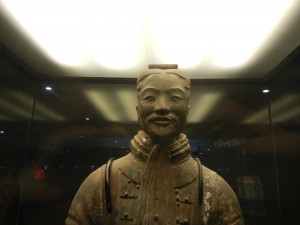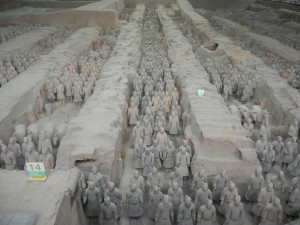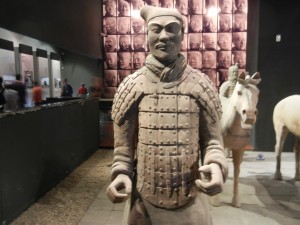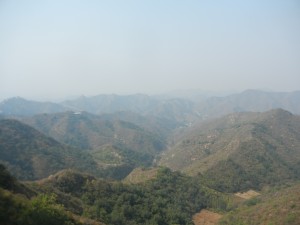Let’s get inside this guy’s head.
When Qin Shihuang unified China, he used a breadth of ideas that reflected the land’s vastness. The last post examined some of the ideas that were already ancient during his reign (221-210 BCE). We’ll now look into his more recent past, and find more depths beneath the soldiers’ surfaces.
Before he conquered China, Qin Shihuang ruled a kingdom in the west called Qin (which China gets its name from). What was special about Qin that allowed it to expand many degrees beyond its boundaries?
A minister called Shang Yang centered the state on the army in the years just after 359 BCE. Infantries had already been growing over the previous 2 centuries–they were becoming more importnat on the battlefield than the old chariot-based nobility.
So groups of thousands of foot soldiers became common sights. Shang Yang took these changes to extremes by organizing the state around the army. Universal military service, with a system of ranks, became the foundation for the state’s administration. And he organized the Qin into a grid of military districts.
Shang Yang could radically organize the Qin state because it was in the far west, and thus outside the mainstream. Its land was also poorer. So Shang Yang didn’t have to deal with a powerful class of aristocrats fighting for their vested interests.
Several technological changes also helped make the standing army a key part of society:
1. The invention of the crossbow.
2. The increasing use of iron weapons.
3. The development of armor composed of leather plates sewn or lacquered together.
So the folks in the above pictures became models of order more than a century before Qin Shihuang created his afterlife trophie home. They thus figured in his mind as a sign of security.
Intellectual developments reinforced the Qin’s focus on the military. This state adopted Legalism. This school of philosophy emphasized an orderly state run by an impersonal system of laws. The emperor presides over it, unseen, but seeing everything. The people are to live simply–farm or fight, but avoid everything wasteful (which includes everything that’s fun, like music, rites, culture, good food and family togetherness).
The Han Dynasty which followed the Qin gave it a bad rap–excessively ambitious and brutal, and lacking Confucian values. Many wealthy Han people put figures like the above guy in their tombs. Entertainers who drummed and told lively stories were popular. Fun returned, and folks hoped to have it in the afterlife too.
But as the picture above the ancient Chinese Keith Moon shows, China is a huge land that’s full of rugged territory. And many states were competing for dominance during the Qin state’s rise. Unifying the country required a political center with a will and heart that were much harder than this drummer’s flab.
So the more than 7,000 terra-cotta warriors resonated in Qin Shihuang’s world. Several events in the previous 300 years converged with the political and intellectual landscape of his time to create these soldiers and officers.
But these guys are only the surface of Qin Shihuang’s tomb. We’ll explore the rest of it in The Terra Cotta Army, Part Three.






Comments on this entry are closed.